Renault Captur vs VW T-Cross – Suorituskyky, toimintamatka ja kulutus vertailussa
Vertaa suorituskykyä, tavaratilaa, kulutusta ja hintaa yhdellä silmäyksellä.
Ota selvää, kumpi auto on sinulle parempi valinta – Renault Captur vai VW T-Cross?
The Battle of the Compact SUVs: Renault Captur vs. VW T-Cross
The compact SUV segment is fiercely competitive, with numerous options vying for consumer attention. Among these, the Renault Captur and the VW T-Cross stand out as popular choices. As we dive into the 2024 models, let's compare these two vehicles in terms of technical specifications, innovations, and overall appeal.
Design and Dimensions
Both the Captur and the T-Cross boast a trendy SUV design with a focus on urban utility and compact form. Measuring 4,239mm in length, 1,797mm in width, and 1,575mm in height, the Renault Captur is slightly larger than the T-Cross, which measures 4,127mm in length, 1,784mm in width, and 1,573mm in height. The added length and width give the Captur a more substantial road presence. In terms of trunk capacity, VW T-Cross offers 455 liters compared to Captur's 422 liters, providing a bit more luggage space for longer journeys.
Engine and Performance
The Renault Captur offers more variety in engine types, including Full Hybrid, Petrol MHEV, LPG, and standard Petrol engines. The engine outputs range from 91 to 158 HP, with torque figures between 160 and 270 Nm, allowing for a broad spectrum of performance needs. In terms of efficiency, the hybrid variant shines with a consumption of just 4.7 L/100km.
On the other hand, the VW T-Cross sticks to petrol engines with outputs ranging from 95 to 150 HP and torque from 175 to 250 Nm. The T-Cross provides a respectable fuel economy of 5.6 to 6 L/100km, appealing to those prioritizing fuel efficiency alongside performance.
Driving Dynamics
Both vehicles are equipped with front-wheel drive systems. The Captur offers a range of transmissions, including a manual gearbox, an automatic gearbox, and a dual-clutch automatic, ensuring flexibility in driving preferences. The T-Cross offers manual and dual-clutch automatic transmissions, emphasizing a straightforward driving experience.
Acceleration differs between the models, with the T-Cross capable of a slightly faster 0-100 km/h time in some variants, clocking a best of 8.4 seconds compared to the Captur's best of 8.5 seconds. Aggressive drivers might appreciate the T-Cross’s slightly brisker acceleration.
Interior and Features
Both models offer a seating capacity for five, reflecting their compact family-friendly design. The Captur focuses on driver comfort with a modern, tech-packed interior, featuring the latest infotainment systems and connectivity options. In contrast, the T-Cross provides a sharp, contemporary dashboard with intuitive controls, ensuring an engaging user experience.
Safety and Innovations
Safety remains paramount in SUVs, and both the Captur and T-Cross deliver well. They come equipped with the latest safety technologies and driver assistance systems, providing peace of mind for drivers and passengers alike. However, the Captur extends its appeal with a Full Hybrid variant, showcasing Renault’s commitment to innovative eco-friendly technologies.
Conclusion
Choosing between the Renault Captur and the VW T-Cross is no easy task. With its broader engine range and hybrid option, the Captur caters to a diverse audience looking for choice and efficiency. Meanwhile, the T-Cross impresses with its straightforward approach, consistent performance, and larger trunk capacity. Ultimately, the decision might come down to personal preferences in design, driving feel, and brand loyalty.
Both vehicles represent excellent choices in the compact SUV segment, each with its own set of strengths tailored to different lifestyle needs.
Tässä mennään yksityiskohtiin: tekniset erot tarkemmin
Kustannukset ja kulutus: Taloudellisuudessa on mielenkiintoisia eroja näiden kahden mallin välillä.
Renault Captur on hinnassa tuskin havaittava edullisempi – sen lähtöhinta on 23500 €, kun taas VW T-Cross maksaa 24600 €. Ero on noin 1100 €.
Polttoaineenkulutuksessa näkyy ero: Renault Captur kuluttaa 4.50 L ja on siten huomattava taloudellisempi kuin VW T-Cross, jonka kulutus on 5.40 L. Ero on noin 0.90 L /100 km.
Moottori ja suorituskyky: Teho, vääntömomentti ja kiihtyvyys kertovat paljon auton ajotuntumasta. Tässä näkyy, kumpi tarjoaa enemmän ajamisen iloa.
Moottoritehossa Renault Captur on tuskin havaittava etulyöntiasemassa – 158 hv verrattuna 150 hv:een. Ero on noin 8 hv hv.
Kiihdytyksessä 0–100 km/h VW T-Cross on melkein huomaamaton nopeampi – 8.40 s vs. 8.50 s. Ero on noin 0.10 s sekuntia.
Huippunopeudessa VW T-Cross on vähäinen edellä – se yltää 200 km/h:een, kun taas Renault Captur saavuttaa 180 km/h. Ero on noin 20 km/h.
Vääntömomentissa näkyy myös ero: Renault Captur vetää melkein huomaamaton voimakkaammin, 270 Nm verrattuna 250 Nm:een. Eroa on noin 20 Nm.
Tila ja käytännöllisyys: Sisätilat, tavaratila ja kantavuus ratkaisevat auton arjen käytettävyyden. Mukavuus ja joustavuus ovat avainasemassa.
Molemmissa autoissa on tilaa 5 henkilölle.
Omapainossa VW T-Cross on melkein huomaamaton kevyempi – 1267 kg verrattuna 1293 kg:een. Painoero on noin 26 kg.
Tavaratilan koossa VW T-Cross tarjoaa tuskin havaittava enemmän – 455 L verrattuna 422 L:een. Ero on noin 33 L.
Maksimikantavuudessa Renault Captur pärjää kevyt paremmin – jopa 1363 L, noin 82 L enemmän kuin VW T-Cross.
Kantavuudessa VW T-Cross on tuskin havaittava parempi – 480 kg verrattuna 457 kg:een. Ero on noin 23 kg.
Yhteenvetomme: Renault Captur osoittautuu olevan voittaa vertailun selvästi ja saa siksi tittelin DriveDuel Champion!
Tässä vertailussa Renault Captur on monipuolisempi kokonaisuus.
Renault Captur
Renault Captur on tyylikäs ja monipuolinen kaupunkiauto, joka yhdistää käytännöllisyyden ja modernin muotoilun. Sen kohokohtia ovat mukautuva sisustus ja tilavat tavaratilat, jotka tekevät siitä erinomaisen valinnan aktiivisille perheille. Lisäksi Capturin ajomukavuus ja tehokkaat moottorivaihtoehdot tekevät siitä miellyttävän kumppanin niin arjessa kuin viikonlopun seikkailuissa.
Tiedot @ renault-presse.de
@ renault-presse.de
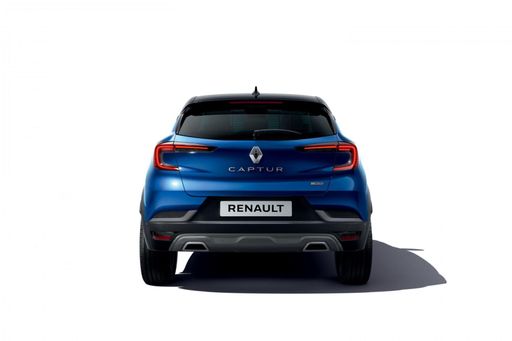 @ renault-presse.de
@ renault-presse.de
 @ renault-presse.de
@ renault-presse.de
 @ renault-presse.de
@ renault-presse.de
VW T-Cross
Volkswagen T-Cross on kompakti SUV, joka yhdistää modernin muotoilun ja käytännöllisyyden erinomaisella tavalla. Sen tilava sisustus ja monipuoliset säilytystilat tekevät siitä erinomaisen valinnan kaupunkiajoon sekä pidemmille matkoille. T-Crossin ajettavuus ja mukavuus tekevät siitä houkuttelevan vaihtoehdon monille autoilijoille.
Tiedot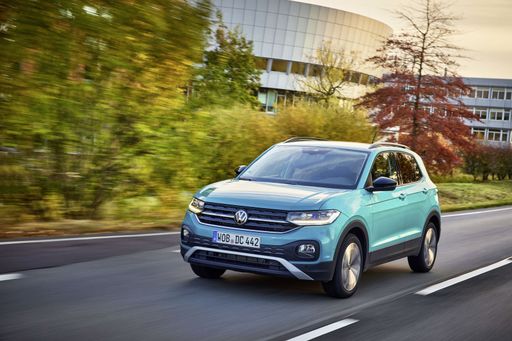 @ Volkswagen
@ Volkswagen
 @ Volkswagen
@ Volkswagen
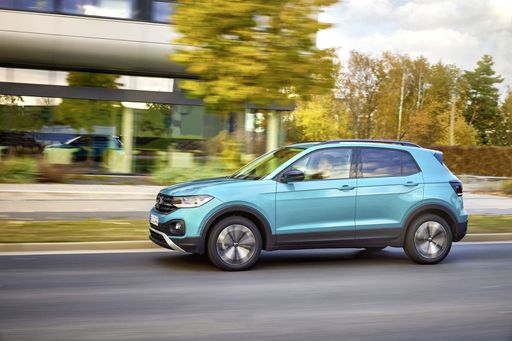 @ Volkswagen
@ Volkswagen
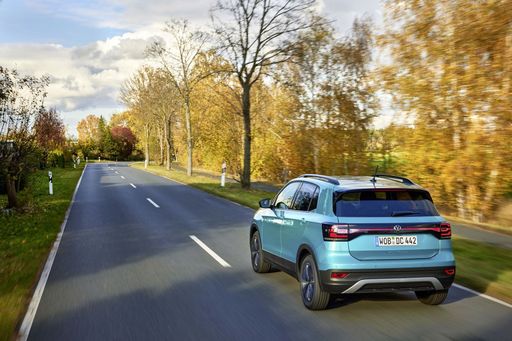 @ Volkswagen
@ Volkswagen
 @ Volkswagen
@ Volkswagen
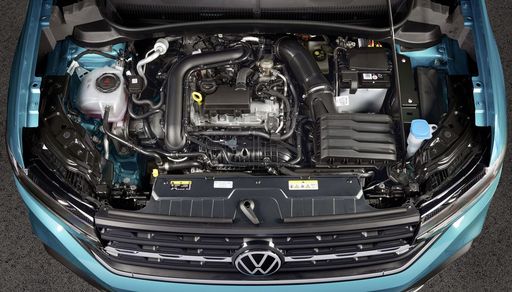 @ Volkswagen
@ Volkswagen

|

|
|
|
|
Kustannukset ja kulutus |
|
|---|---|
|
Hinta
23500 - 33100 €
|
Hinta
24600 - 36700 €
|
|
Kulutus L/100km
4.5 - 6 L
|
Kulutus L/100km
5.4 - 6 L
|
|
Kulutus kWh/100km
-
|
Kulutus kWh/100km
-
|
|
Sähköinen toimintasäde
-
|
Sähköinen toimintasäde
-
|
|
Akun kapasiteetti
-
|
Akun kapasiteetti
-
|
|
CO2
102 - 135 g/km
|
CO2
124 - 136 g/km
|
|
Polttoainesäiliön tilavuus
48 L
|
Polttoainesäiliön tilavuus
40 L
|
Mitat ja kori |
|
|---|---|
|
Kori
SUV
|
Kori
SUV
|
|
Istuimet
5
|
Istuimet
5
|
|
Ovet
5
|
Ovet
5
|
|
Omamassa
1293 - 1514 kg
|
Omamassa
1267 - 1338 kg
|
|
Tavaratila
326 - 422 L
|
Tavaratila
455 L
|
|
Pituus
4239 mm
|
Pituus
4127 mm
|
|
Leveys
1797 mm
|
Leveys
1784 mm
|
|
Korkeus
1575 mm
|
Korkeus
1573 mm
|
|
Maksimi tavaratila
1276 - 1363 L
|
Maksimi tavaratila
1281 L
|
|
Kantavuus
376 - 457 kg
|
Kantavuus
463 - 480 kg
|
Moottori ja suorituskyky |
|
|---|---|
|
Moottorityyppi
Bensiini MHEV, Bensiini, Täyshybridi
|
Moottorityyppi
Bensiini
|
|
Vaihteisto
Manuel, Automaatti
|
Vaihteisto
Manuel, Automaatti
|
|
Vaihteiston tyyppi
Manuaalivaihteisto, Kaksoiskytkin automaatti, Automaattivaihteisto
|
Vaihteiston tyyppi
Manuaalivaihteisto, Kaksoiskytkin automaatti
|
|
Vetotapa
Etuveto
|
Vetotapa
Etuveto
|
|
Teho hv
91 - 158 hv
|
Teho hv
95 - 150 hv
|
|
Kiihtyvyys 0-100 km/h
8.5 - 14.3 s
|
Kiihtyvyys 0-100 km/h
8.4 - 11.3 s
|
|
Huippunopeus
168 - 180 km/h
|
Huippunopeus
180 - 200 km/h
|
|
Vääntömomentti
160 - 270 Nm
|
Vääntömomentti
175 - 250 Nm
|
|
Sylinterien lukumäärä
3 - 4
|
Sylinterien lukumäärä
3 - 4
|
|
Teho kW
67 - 116 kW
|
Teho kW
70 - 110 kW
|
|
Iskutilavuus
999 - 1789 cm3
|
Iskutilavuus
999 - 1498 cm3
|
Yleiset |
|
|---|---|
|
Mallivuosi
2024 - 2025
|
Mallivuosi
2024 - 2025
|
|
CO2-tehokkuusluokka
D, C
|
CO2-tehokkuusluokka
D, E
|
|
Merkki
Renault
|
Merkki
VW
|
Millaisia voimalinjoja Renault Captur:ssa on saatavilla?
Mallia tarjotaan Etuveto-versiona.
Näytetyt hinnat ja tiedot ovat arvioita, jotka perustuvat Saksan listahintoihin, ja voivat vaihdella maittain. Nämä tiedot eivät ole oikeudellisesti sitovia.
